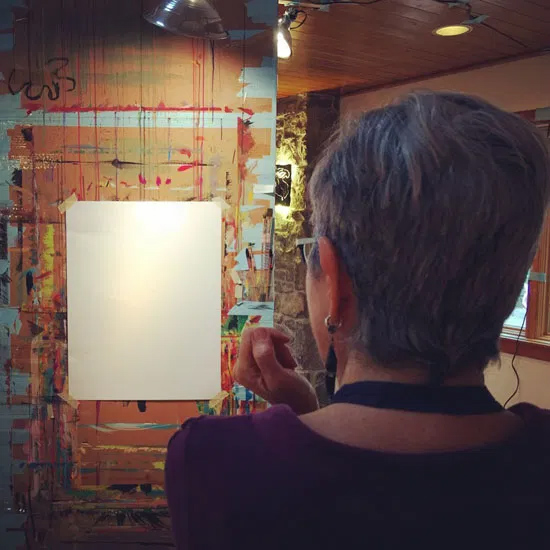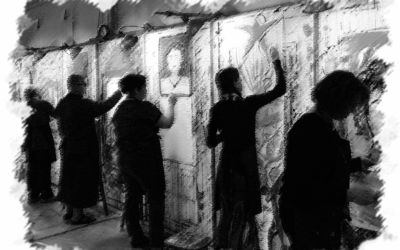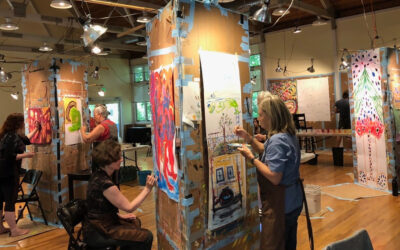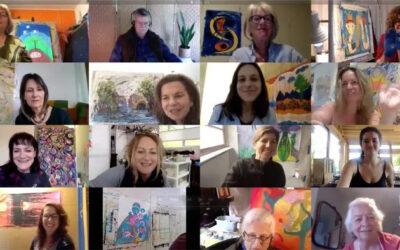
The untouched surface has a special power.
The void is the source of all creation. In process painting, your willingness to meet this emptiness without panic is your greatest ally. Let the blank paper challenge you and see what happens!
Emptiness Calls Forth Your Creativity
People sometimes start their paintings by filling in the background — the whole surface is covered in a few minutes. They may do this out of habit, fear, learned technique, or convenience. Whatever the reason, not a trace of virgin paper is left. We always witness with apprehension this killing of the void.
The untouched surface has a special power, so much so that it can often intimidate or momentarily paralyze us. Emptiness is a mating call to creation; the void attracts form and embraces it in an act of love. The pure space has a magnetism that reaches deep inside our being and brings out the best part of us, the part ready to be born. There was nothing; then there is something. The void must be treated with respect, entered carefully and slowly. If the void is filled thoughtlessly, its power is destroyed and a precious potential is lost. Covering a new space too quickly, either for reassurance or for practicality, will smother your intuition.
Living With Uncertainty Opens Your Intuition
Let yourself rest in the void for a while. Perhaps an impulse will come — say, a little blue area just right of center — and you will start with that. Put the brush in that spot and move slowly. Be sensitive to where the brush wants to move. Follow its lead. It may feel good to continue carefully, to stay in a limited area. Live with the uncertainty of what will appear in the surrounding white space.
Acting too quickly defeats one of the purposes of process painting, which is to put you in a position where you don’t know what to do. Let your feelings be free as you continue to paint in the moment, not knowing how to resolve the painting as a whole. It is living with this uncertainty that begins to open the intuitive senses. Hidden levels reveal themselves when you rest quietly in the unknown.
More Information About Process Painting
This article is adapted from the book Life, Paint and Passion: Reclaiming the Magic of Spontaneous Expression, co-authored by Stewart Cubley.
To find out about opportunities to participate in The Painting Experience, see our Programs.



